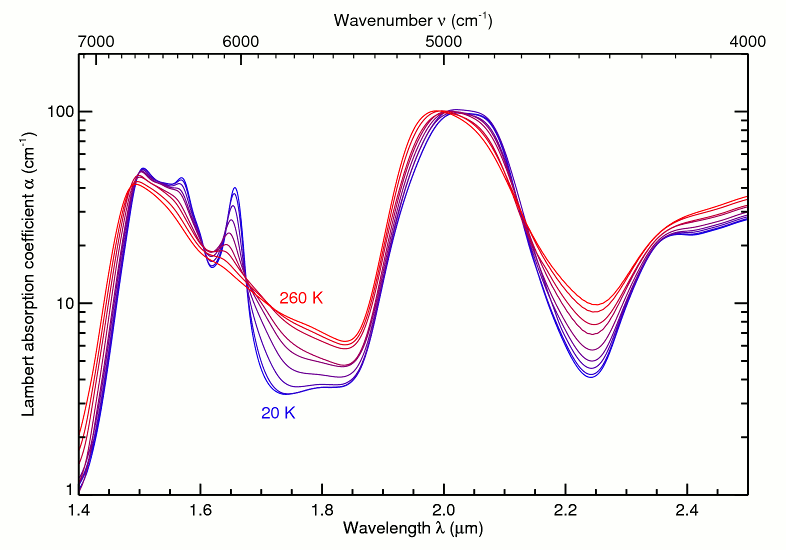
The Temperature-Dependent Near-Infrared Absorption Spectrum of Hexagonal H2O Ice
Published in 1998: J. Geophys. Res. 103, 25,809-25,822.
W.M. Grundy(1,3) and B. Schmitt(2,3)
(1) Lowell Observatory, Flagstaff Arizona.
(2) Laboratoire de Planétologie de Grenoble, Grenoble, France.
(3) Formerly at Laboratoire de Glaciologie at Géophysique de l'Environnement, St. Martin d'Hères, France.
Abstract
Transmission spectra were measured between 1.0 and 2.7 microns for monocrystalline samples of hexagonal water ice at temperatures between 20 and 270 K. Samples were crystallized from liquid water within closed cells, with thicknesses ranging from 100 microns to 1.0 cm. The absorption spectrum of ice changes with temperature in several ways. With higher temperature, the shapes of absorption bands become more smoothed, the strengths of some absorption bands decrease, the absorption in continuum wavelengths increases, and the band centers of some absorption bands shift to shorter wavelengths. In this paper we present the new absorption coefficient spectra along with an examination of the different temperature effects. These data should prove extremely valuable for analysis of near infrared reflectance spectra of low-temperature icy surfaces, such as those of outer solar system satellites, Pluto and Charon, the surfaces of comet nuclei, the polar caps of Mars, and terrestrial snow and ice-covered regions. The data may also be of value in simulating radiative transfer in clouds of ice particles in the atmospheres of planets.
